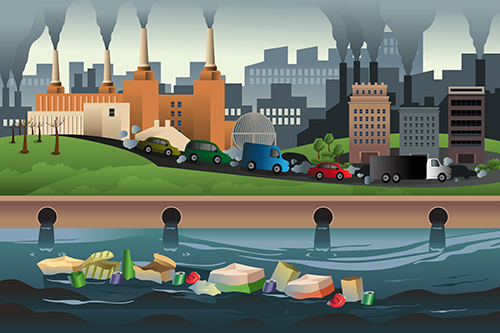 From the early 1990s through the early years of this century, pollution legal liability (PLL) insurance policies were increasingly specialized. The policies were marked by detailed underwriting and tight targeting of specific types of policyholders. Then as now, the scope of such coverage often depended on the definition of “pollution conditions” (sometimes called a “pollution event”). Today, however, the trend is toward a broadening of the phrase.
From the early 1990s through the early years of this century, pollution legal liability (PLL) insurance policies were increasingly specialized. The policies were marked by detailed underwriting and tight targeting of specific types of policyholders. Then as now, the scope of such coverage often depended on the definition of “pollution conditions” (sometimes called a “pollution event”). Today, however, the trend is toward a broadening of the phrase.A typical PLL policy will provide coverage for liabilities as a result of a “pollution condition.” In the early days of such policies, “pollution conditions” were defined as:
The discharges, dispersal release or escape of smoke, vapors, soot, fumes, acids, alkalis, toxic chemicals, liquids or gases, waste materials or other irritants, contaminants or pollution into or upon land, the atmosphere or any watercourse of body of water, which results in bodily injury or property damage.
In more recent years, in some policies, the definition has expanded to include express reference to things like “hazardous substances, petroleum hydrocarbons, low-level radioactive materials, medical waste and waste materials.” One recent policy expressly referenced “medical infectious and pathological waste, low-level radioactive waste and material, Legionella and microbial matter” in the definition. Another included electromagnetic fields as well as “municipal, industrial, medical, pathological and low-level radioactive waste materials.” Al Everts, a leading environmental insurance broker and director of Green Insurance Exchange in Boston, pointed out that some new policies coming to market can even include biological weapons in the definition.
Of course, it should also be noted that “pollution conditions” are associated with exclusions. Modern PLL policies include the known conditions exclusion and the related site development exclusion.
Under the “known loss” or fortuity doctrine, insurance companies argue that insurance does not cover losses that have already taken place or are substantially certain to occur. Accordingly, insurance companies invoke the doctrine when the policyholder “knows” about the claimed loss before the policy is purchased.
The “known conditions” exclusion—a type of known loss exclusion— has been defined by an insurance company in one PLL policy to exclude coverage for loss “arising from pollution conditions existing prior to the inception of this policy, and reported to any officer, director, partner or other employee responsible for environmental affairs of the named insured, unless all of the material facts relating to the pollution conditions were disclosed to the company in materials prior to the inception of this policy.”
Insurance companies therefore argue that it is the disclosure of the pollution conditions that is key to applicability of this exclusion and not whether the policyholder knew of the conditions prior to the policy. For example, some PLL policies contain language requiring the insurance company to pay cleanup costs resulting from pollution conditions provided that “the discovery of such pollution conditions is reported…as soon as possible after discovery.”
Just what the policyholder knew and whether it disclosed such knowledge in a timely manner is a source of litigation in PLL claims. In one matter involving litigation of such issues, the policyholder was involved in the development, construction and property management of a housing project. An investigation revealed that the policyholder had illegally dumped construction and demolition debris in an open dump. A subcontractor was alleged to have been responsible, but the insurance company argued that the policyholder was aware of and consented to the dumping.
After coverage was denied, the policyholder sued and sought coverage for the costs associated with the ongoing investigation and remediation of buried construction and demolition debris. On the issue of whether the discovery of the pollution conditions were reported as soon as possible after discovery, the court held that it was unclear when the policyholder became aware of the debris. The court also held, in denying the policyholder’s motion for summary judgment, that it was unclear whether personnel who were aware of the debris at some earlier point constituted “responsible insureds.”
As with insurance claims in general, policyholders seeking coverage under modern PLL policies should, on general principle, provide notice of a claim—even if they are unsure whether it actually rises to the level of a claim—as soon as possible.
Insurance companies also seek to invoke the doctrine of fortuity in the context of so-called “site development” exclusions. In particular, insurance companies argue that site development exclusions preclude coverage of “known conditions arising from pollution conditions that existed prior to the inception of the policy.” At least one court, however, has held that a site development exclusion is ambiguous on the grounds that there are multiple reasonable interpretations of the term “known.” For example, it was unclear if the threshold of knowledge required is one of specific knowledge of a specific condition, or if merely general knowledge of a general condition is required.
Because insurance is designed to cover risks to which a policyholder knows it is subject, “known loss” assertions are often fraught with ambiguity. Now that PLL policies are widening the scope of potential coverage, issues of notice and disclosure are the likeliest flashpoints for coverage disputes. As a result, policyholders and brokers are well advised to err on the side of early and comprehensive disclosure.
